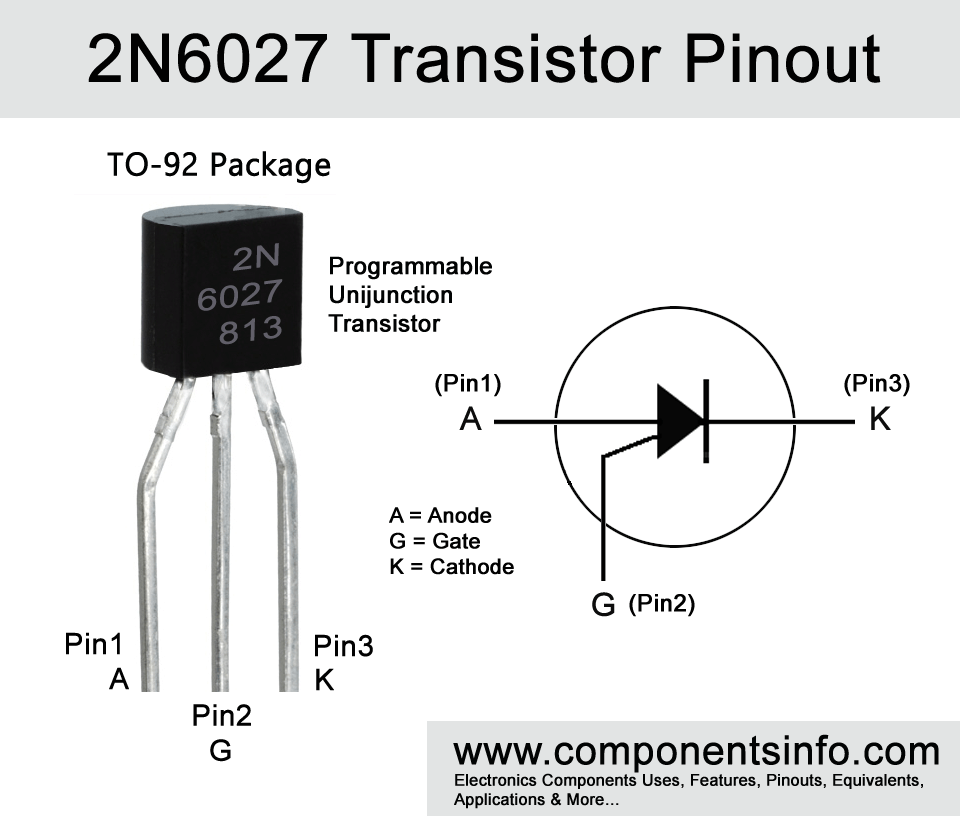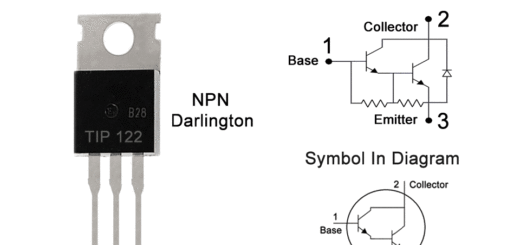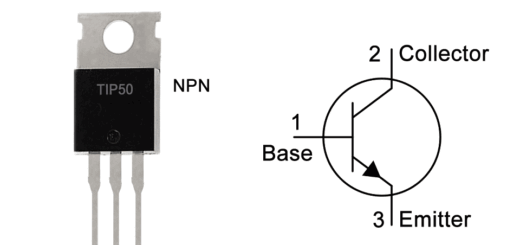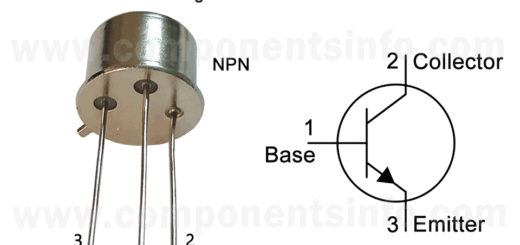2N6027 Transistor Pinout, Equivalent, How and Where to Use It and Other Details
2N6027 is a programmable unijunction transistor. The transistor looks physically similar to other normal TO-92 transistors but internally it is very different. This article explains 2N6027 transistor pinout, equivalent, how and where to use it and other details about this transistor.
Features / Technical Specifications:
- Package Type: TO-92
- Transistor Type: PUT (Programmable Unijunction Transistor)
- Max DC Forward Anode Current (IT): 150mA
- Max Power Dissipation (PF): 300 Miliwatt
- Max DC Gate Current (IG): ±50 mA
- Gate to Cathode Forward Voltage (VGKF): 40V
- Gate to Anode Reverse Voltage (VGAR): 40V
- Gate to Cathode Reverse Voltage (VGKR): -5.0
- Anode to Cathode Voltage(1) (VAK): ±40V
- Max Storage, Operating & Junction temperature range: -55 to +150 Centigrade
Replacement and Equivalent:
NTE6402
2N6027 Transistor Explained / Description:
2N6027 is a programmable unijunction transistor or PUT available in TO-92 transistor package. But don’t confuse with the word programmable, because that doesn’t mean it has any kind of microcontroller that you can program. It is similar to a unijunction transistor but the difference is that it can be programmed with two external resistors which can be connected to its gate to control its output.
In other words we can explain it that it is a unijunction transistor which provides more control as compare to the normal unijunction transistor because it can be controlled or programmed with two external resistors.
When you look at the internal diagram of the transistor you will see it mostly looks like an SCR and also works like an SCR by blocking the current until the triggered ON, once it is triggered it will come in the latch state in condition of high current and remains in the latch state as long as the current gets under the latching limit current. The PUT also has four layers like an SCR but it cannot drive high current load like an SCR because it is built to trigger low current loads so with the loads limit of PUT transistor you can drive loads of upto 50mA.
The applications in which this transistor can be used are timings circuits, pulse circuits, oscillator circuits, thyristor-trigger circuits etc.
Where We Can Use it & How to Use:
As mentioned 2N6027 transistor can be used in applications such as timings circuits, pulse circuits, oscillator circuits, thyristor-trigger circuit but it is not limited to these uses and can be used for other applications too. Using this transistor is different from the normal BJT, UJT and FETs. This transistor is used with voltage divider technique. We have to make a voltage divider with two resistors. These two resistors set the voltage at the gate of the transistor and that’s how we program this transistor.
Applications:
Thyristor-trigger
Timings applications
Oscillator applications
Pulse applications
Safe Operating Guidelines / Absolute Maximum Ratings:
To safely operate this transistor use it 20% below from its maximum ratings. The maximum gate to cathode forward voltage is 40V therefor it should be under 32V. The gate to cathode reverse voltage is 40V therefore it should be under 32V. The maximum DC forward anode current is 150mA therefore it should not exceed from 120mA. The operating junction temperature should be under -50 °C to +100°C and the storage temperature should be under -55°C to +150°C.
Datasheet:
To Download the datasheet just copy and paste the below link in your browser.
https://cdn.datasheetspdf.com/pdf-down/2/N/6/2N6027_ONSemiconductor.pdf



